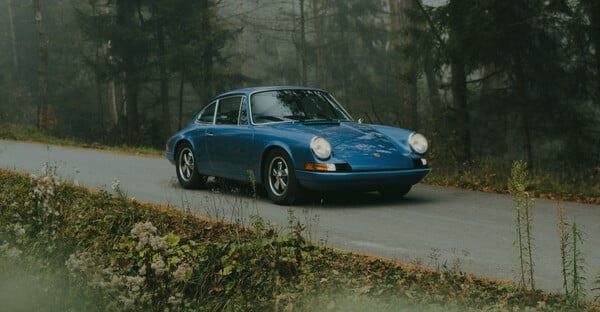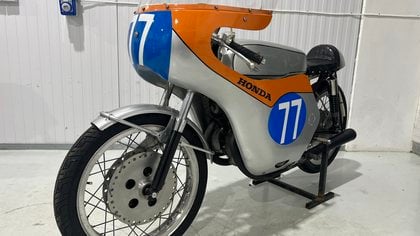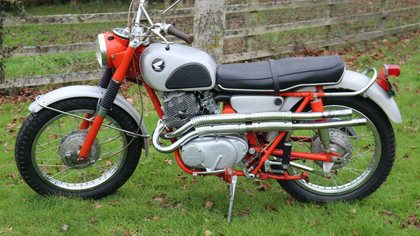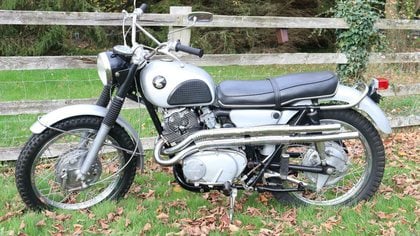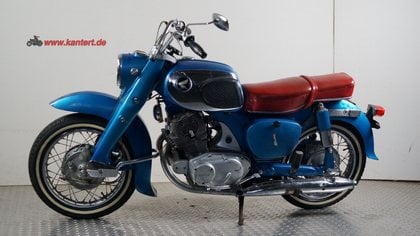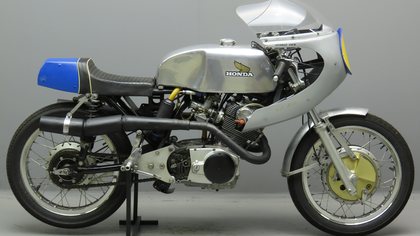Description
Honda CB77, 305cc, Electric Start, 1967. Tax and Mot exempt.
Was a US import as many of these survivors are, now UK registered as historic vehicle with dating certificate and age related number plate. Sympathetically recommissioned retaining the very nice original patina wherever possible.
New seat cover and new exhausts (original exhausts available but rusty/ holed, possibly restorable). Aftermarket indicators fitted for safety.
It has had new battery, carbs cleaned, points, timing, valve clearances etc all checked and set. oil slinger cleaned, modern voltage regulator fitted. Gear box common wear items (various bushes) replaced and misc. other items. All lights etc work except for the neutral indicator as it needs a new switch and they are not available. Tank is nice and clean inside.
Starts very easily hot or cold.
The bike rides very nicely has plenty of power and is fairly quick even by today's standards. The brakes and handling are very good also. Bit tricky to get it in to neutral sometimes with engine running but not a big problem as you can turn it off and it starts again instantly. This is an Ideal candidate for full restoration or just use as is. The mileage I can't confirm but could be correct given the lovely original condition and how well it runs. Only selling due to too many bikes and not enough time. Viewing welcome. The Honda CB77, or Super Hawk, is a 305 cc (18. 6 cu in) straight-twin motorcycle produced from 1961 until 1967. It is remembered today as Honda's first sport bike. It is a landmark model in Honda's advances in Western motorcycle markets of the 1960s, noted for its speed and power as well as its reliability, and is regarded as one of the bikes that set the standard for modern motorcycles.
The CB77 was built on the experience Honda had gained in Grand Prix racing, and differed greatly from previous models. It had a steel-tube frame instead of the pressed frames of earlier Hondas, and a telescopic front fork. The parallel twin engine, the biggest then available in a Honda, was an integral element of the bike's structure, providing stiffness in a frame that had no downtube, and was capable of 9, 000 rpm. It could propel the bike at over 100 mph; as fast as British parallel twins with higher displacements, and with great reliability.

